Have a school or college-going kid at home? Then you must definitely be having a million worries after their studies, home chores, tuitions, projects and the like.
Running after your child to make him sit down to study and finish his lessons must have become a part of life by now. Or maybe you are a teacher, professor, doctor, architect or some professional who needs to spend ample time at the work desk, amidst books and laptops and pens and paper, away from nuisances. How about having a separate space in your house for this purpose?
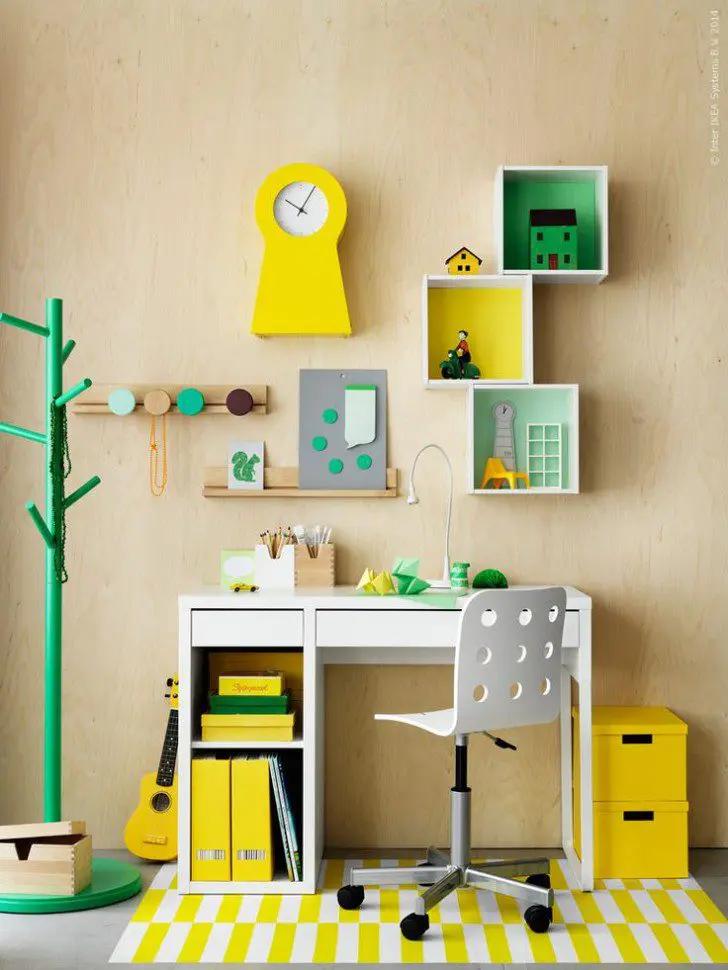
Wouldn’t it be much more fun and easy for your kids to learn while they are at a room specially created for this purpose, with no other disturbances? Wouldn’t it be easier for moms to keep this space for study well arranged and cluster-free? If you are nodding your head in agreement, this article is a must read for you.
7 Effective Ways to Design Your Study Room
1. Make A Wall to Wall Cabinetry
Everyone wants a cluster-free space to focus on their studies, projects and assignments. A study room, as you would imagine in your mind is one with a few chairs, a table, a bookshelf and a floor mat. Is that it? No. How about having wall cabinets and shelves for better arrangement and order in the room?
These cabinets would not just serve as a storage for books but also other items of study – paper rolls, colour boxes, boards, extra stationery items, school and laptop bags and so on. Not just that, a well browsed and chosen cabinet would add that special something to the space and lend it a touch of incomparable vibes.
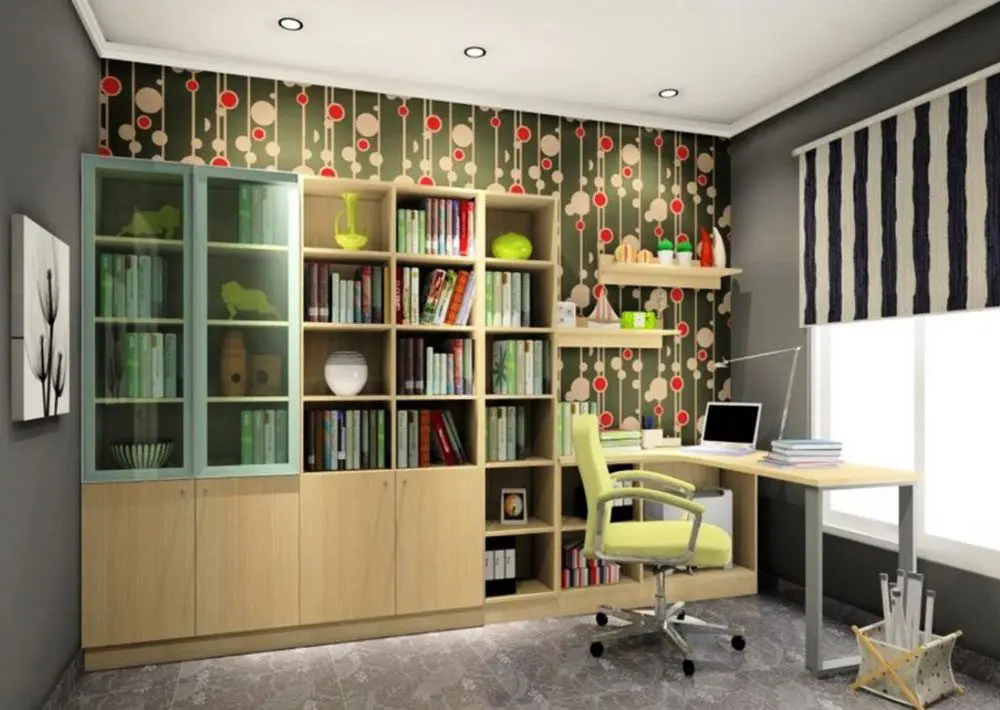
2. The Counter Table
This might vary in size, shape, number and function from user-to-user. If you are designing the space for little kids, think of their needs – crayons, colour pens, pencils, erasers, stickers, glue, papers, notebooks, text books and maybe some other cutesy stuff.
So a kid’s table could have unconventional brightly coloured and interesting canisters to hold their stationery in, while the table must be wide and long enough for the child and his parent to sit down together. If the number of children is more, the table should suit accordingly. If you’ve planned group studies in this space – as in the case of tuition classes, a very long table is needed.
For teens, the needs are different – greater number of books and textbooks, some stationery, geometry boxes and computers. For a college-going student, for a professional or for a book-lover – all of their requirements are different, and he work desk or study table needs to fit into that. The functional space, racks and canisters as well as the appearance varies with the user.

3. Creating Partitions if you have multiple study tables
If you have more than two children and it appears quite difficult to you to make them study together in the study room, you can opt for partitions! Yes! Partitions are a cool way to make your child focussed, as he is then led into his own little private space that spells concentration.
You are not allowing him to be distracted by the presence of others in the room or by the on-goings of his vicinity. Some might debate that such a space is only suggesting a school-like atmosphere – no, it’s rather a continuation.
This space is a private zone of your child. Colourful partitions, built-in tables and personal racks come in handy. After all, study rooms are meant for a purpose!
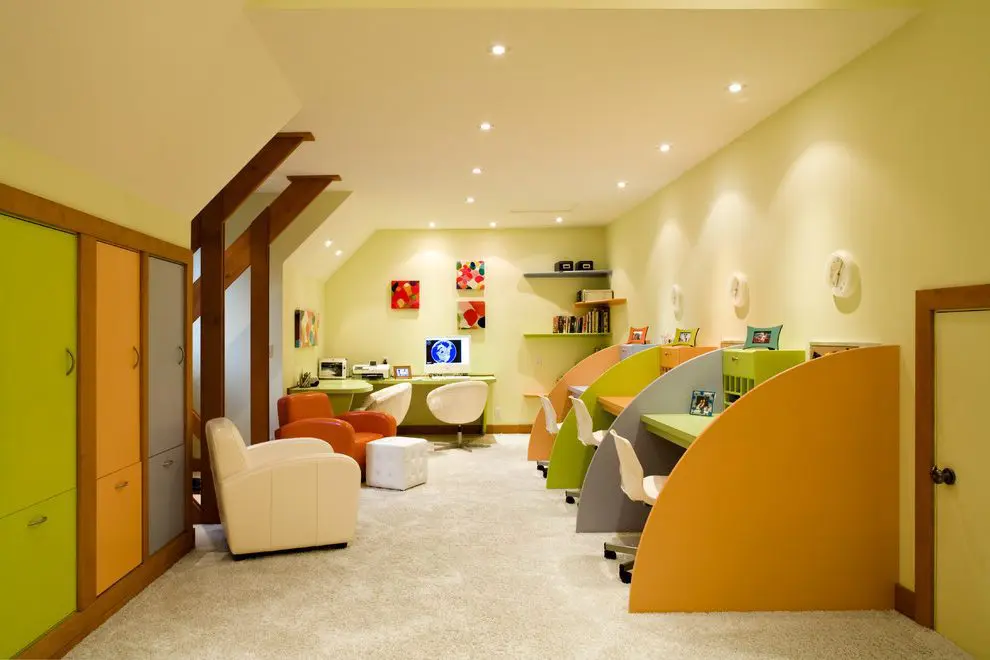
4. Customize your study table to your children’s like
You know what your child is fond of. Designing a space according to his mindset and his preferences is one important aspect. Be it his favourite colour for the walls, his favourite spot for memorizing his lessons or his favourite paintings and poetry – customise his study space with just these elements.
When it comes to you, would you like your walls more sophisticated – beiges, greys and browns – or you wish to have a lighter atmosphere for yourself when you are with your favourite books – consider browsing wallpapers and texture walls or some interesting cladding.
If your good with the brush, this is the space for you to create art – use the wall for hanging your masterpieces, or oh! Why not turn the wall itself into a canvas?
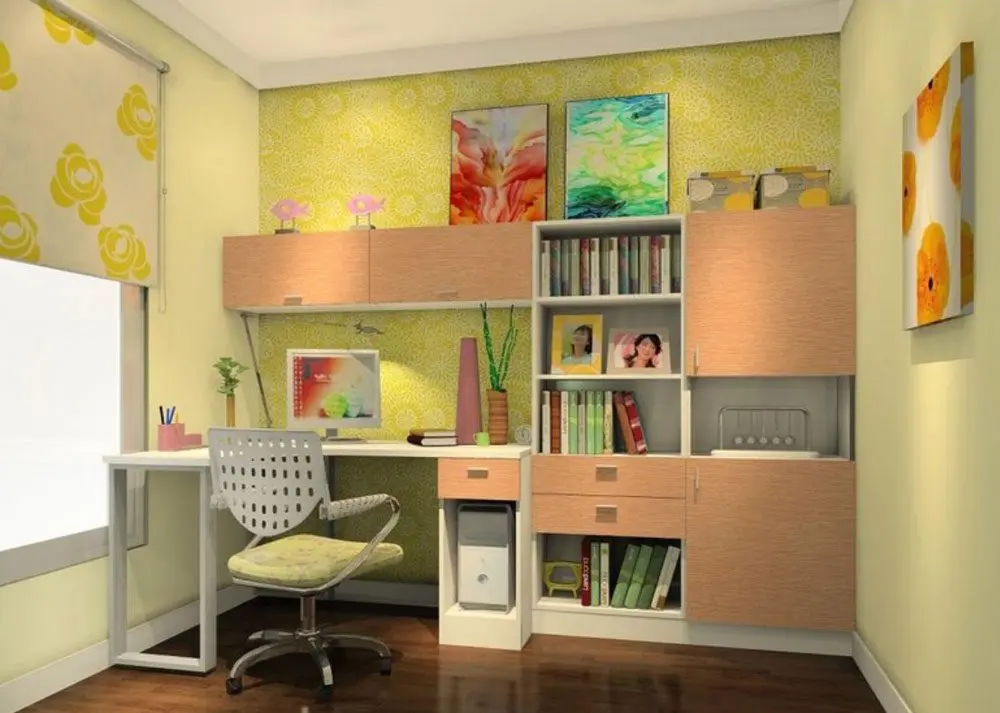
5. Inculcate
In contradiction to the above paragraph – why not design a space forcing such elements into it which you want your child to absorb? Simple suggestions would be alphabets and numbers as part of the decor for your tiny tot; introducing the concept of green by adding some vegetation in the form of interior landscaping; corkboards for sticky notes so that you don’t forget your routine; interesting murals such as a world map for his or her knowledge – the list is literally endless. Get creative!

6. Plan The Seating better
One of the most important parts, you may say. Study spaces call for cosy comfortable sitting, in well-lit and well-ventilated areas – that is, mostly near a window. The type of seating would vary, as we mentioned about the tables.
Cushions are a great idea for project works down on mats, or for group recital practices. Try avoiding stools for the sake of good posture. Comfortable chairs that will be easy to carry around are the best. Put some stress on aesthetics too – a beautiful environment always uplifts your mood and that will help you focus better.
Try opting for little rugs below the chairs – they serve the dual function of preventing scratches on the floor due to pulling and pushing of chairs and secondly they are comfortable to rest your feet on.
Rotating chairs are good for adults – they have soft backrests for providing comfortable seating as well as allow you to deviate a little a little from the screen of your desktop for a quick conjecture!
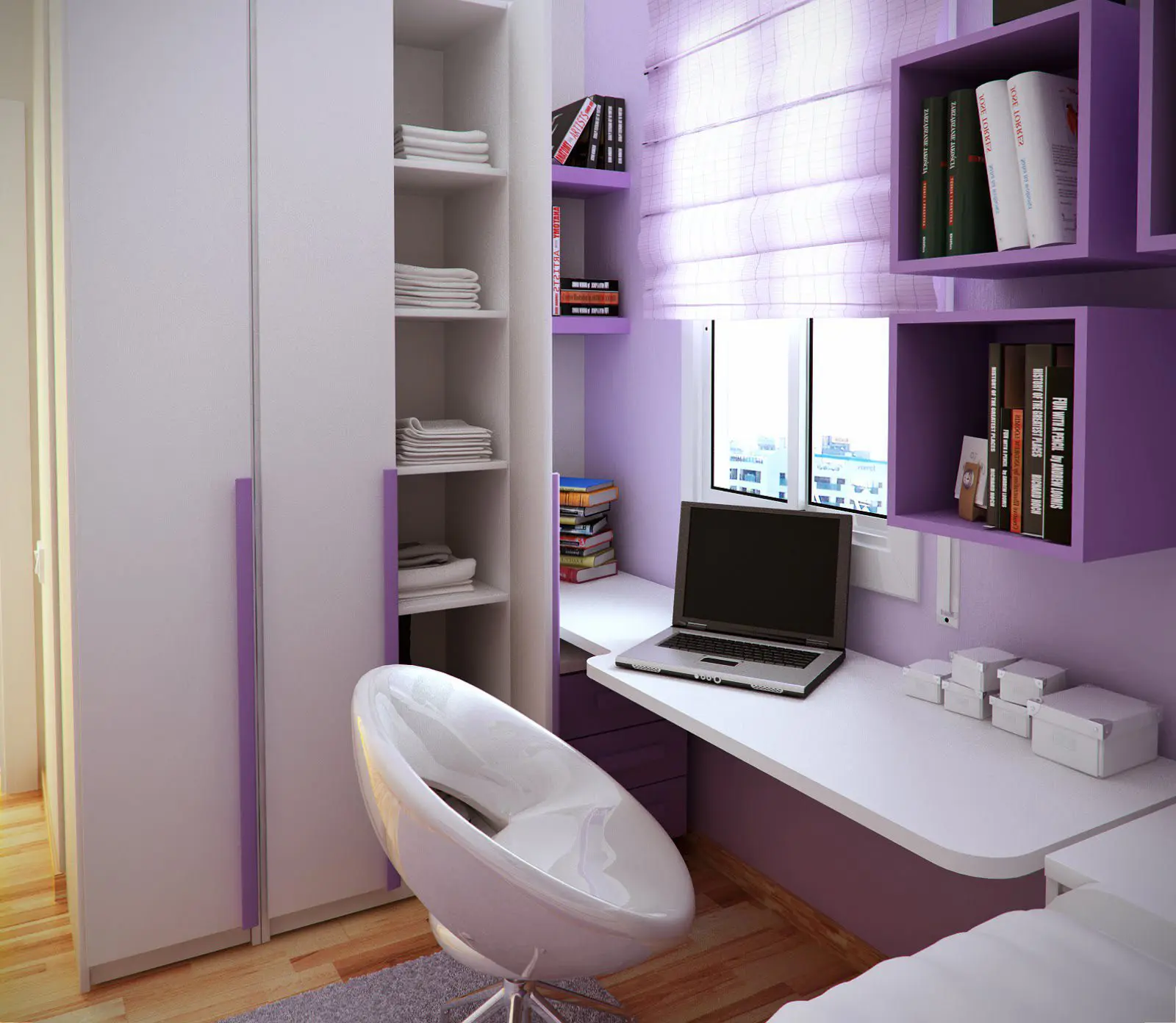
7. use Windows for Natural Ventilation
As we have already mentioned, a well-lit area is an absolute requisite for a study space. Windows are important not just for daylight, but also for ventilation throughout the day.
No, you wouldn’t want all your papers to fly away due to a strong breeze; and this is why the positioning of a window with respect to the wind directions and the sun glare is important.
The north is the best side to have a window – no direct glare from the sun, only diffused scattered sunlight. No heavy breezes, as the prevalent wind direction us from the south and south east.
The size of the window depends a lot on the required amount of light and also on the kind of view the window has to offer – you wouldn’t want to see a bin yard while at your study table, nor do you wish to be distracted by a group of playing children.

In a nutshell, a study space requires a special design as per the demands and the preferences of the user – be it a 5 year old child or a 40-something professional. There could be so many other suggestions and inclusions – a chalkboard and duster or whiteboards and markers to ease the lessons, a display area for artwork – study rooms have so much to offer. The points to remember are – design for a well-lit interior and provide an ambience that suits the user’s temperament and activity.





